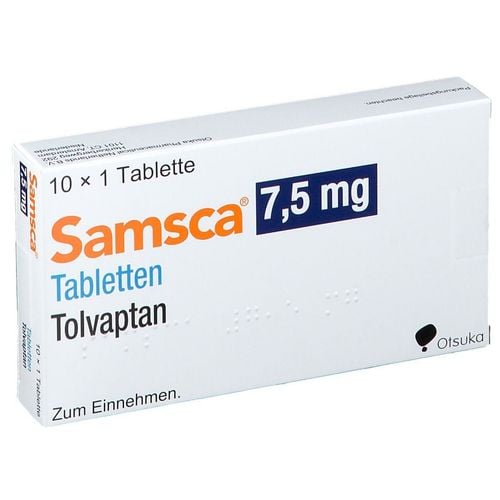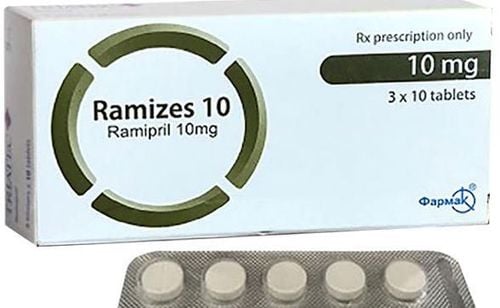This is an automatically translated article.
Glumeron 30 is a familiar drug for patients who are being treated for type 2 diabetes. So to find out specifically what Glumeron 30 is? What are the uses of Glumeron 30? Read the article below to understand more necessary information about the use of Glumeron 30.
1. What is Glumeron 30?
Glumeron 30 drug belongs to the group of hormones and hormones, Glumeron 30 has the main ingredient Gliclazide 30mg;
With the effect of stabilizing blood sugar and being used for elderly patients, Glumeron 30 is quite popular on the diabetes drug market today. Glumeron 30 is available as a controlled release tablet. Glumeron 30 is recommended for use in adults and especially the elderly.
2. Uses of Glumeron 30
Glumeron 30 is prescribed by doctors in cases of controlling blood sugar in non-insulin dependent diabetic patients who have applied dietary measures but have not been effective. Insulin is a hormone produced by pancreatic beta cells that lowers blood sugar levels. Glumeron is an antidiabetic drug with the active ingredient gliclazide, belonging to the sulfonylurea group. The drug stimulates the beta cells of the pancreas to increase insulin release, so it only works in patients whose pancreas is still able to produce insulin. In addition, Gliclazide also reduces the clearance of insulin in the liver, helping the body not lose insulin. Thereby increasing the amount of this hormone in the serum. Gliclazide is readily absorbed from the gastrointestinal tract. The drug is strongly bound to plasma proteins. The half-life is about 10-12 hours. Gliclazide is extensively metabolised in the liver to metabolites without significant hypoglycemic activity. Metabolites and small amounts of unchanged drug are excreted in the urine.
3. How to use Glumeron 30
3.1. Glumeron 30 is used orally in the treatment of type 2 diabetes and is active for 12 to 24 hours. Because of its shorter potency than clopropamide or glibenclamide, it is more suitable for elderly patients who are prone to hypoglycaemia when taking long-acting sulfonylurea drugs.
The dose of Glumeron 30 MR must be appropriate for each specific case and must be based on the patient's blood sugar. Tablets should be swallowed whole, do not chew or crush before taking.
3.2. Dosage of Glumeron 30 Recommended starting dose: 1 Glumeron 30 MR tablet/day, including patients over 65 years of age, increase dose if necessary, increase 30 mg (1 Glumeron 30 MR tablet) each adjustment and Monitor for at least 1 month before the next adjustment, except in cases where blood sugar does not decrease after 2 weeks of using the drug, the dose can be increased after 2 weeks. Usual dose: from 1 to 4 tablets of Glumeron 30 MR (maximum dose 120 mg), taken once only at breakfast. Dosage depends on response to treatment. 3.3. Overdose and treatment when taking Glumeron 30 Overdose will lead to signs of hypoglycemia such as sweating, pale skin, tachycardia. In mild cases, treat mild hypoglycemia by immediately drinking a glass of sugar water or juice with 2 or 3 teaspoons of sugar added. In severe cases, there may be lethargy, 10% or 30% glucose solution should be given intravenously immediately and the patient should be transferred to the hospital.
Treat by gastric lavage and correct hypoglycaemia with appropriate measures along with continuous monitoring of the patient's blood glucose status until drug effects have been ruled out.
4. Contraindications of Glumeron 30
Insulin-dependent diabetes mellitus (type 1 diabetes). Coma or pre-coma due to diabetes. Severe liver failure Severe renal failure. History of allergy to sulfonamides and other sulfonylureas Co-administration with miconazole tablets Severe infections or major trauma, major surgery. Pregnant and lactating women
5. Note when using Glumeron 30
While taking Glumeron 30 MR, it is still necessary to maintain the diabetic patient's diet to help the drug take full effect. When using Glumeron 30 in combination with other drugs that increase or decrease the hypoglycemic effect of the drug, it is necessary to adjust the dose of Glumeron accordingly. In the case of patients with renal and hepatic impairment, the dose should be reduced to avoid side effects. Hypoglycemia may occur in some high-risk patients such as: irregular eating, malnutrition, fasting, imbalance between exercise level and diet; change in diet; drinking alcohol (especially when accompanied by skipping meals), taking too high a dose of gliclazide; endocrine disorders (dysfunction of the pituitary gland, thyroid gland or adrenal cortex); severe kidney failure or severe liver failure. Patients with a family history or personal history of G6PD (glucose-6-phosphate dehydrogenase) deficiency may develop a decrease in hemoglobin concentration and destruction of red blood cells. Effects of Glumeron 30 on work: Use caution when operating machinery and driving because the drug can cause headaches. Some drugs increase the hypoglycemic effect of gliclazide: Nonsteroidal anti-inflammatory drugs (especially aspirin), antibacterial sulphonamides, coumarins, anticoagulants, MAOIs, beta-blockers, diazepam, tetracyclines, perhexillin maleate, chloramphenicol , clofibrate, miconazole tablets. Drinking alcohol may also enhance the hypoglycemic effect of gliclazide. Several drugs reduce the hypoglycemic effect of gliclazide, such as barbiturates, corticosteroids, salt-sparing diuretics, and oral contraceptives.
6. Side effects of the drug Glumeron 30
Common: headache, gastrointestinal disturbances, nausea, rash. Uncommon: thrombocytopenia, agranulocytosis, leukopenia, anemia, skin and mucosal reactions. Rare: lethargy, sweating, increased heart rate, vomiting, extreme hunger. The above are not all side effects of Glumeron 30. Therefore, if you experience any unusual symptoms while taking the drug, you should immediately notify your doctor or pharmacist.
Please dial HOTLINE for more information or register for an appointment HERE. Download MyVinmec app to make appointments faster and to manage your bookings easily.













